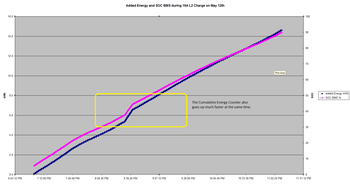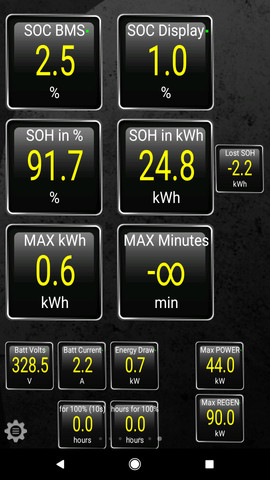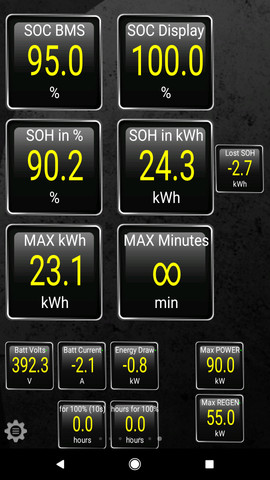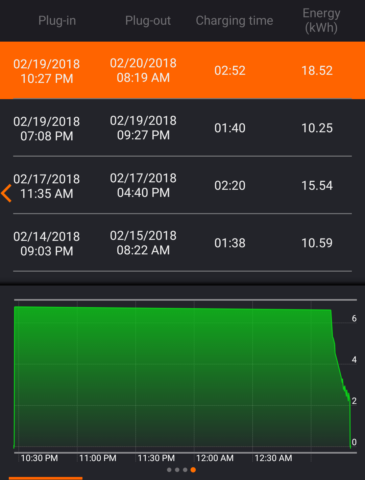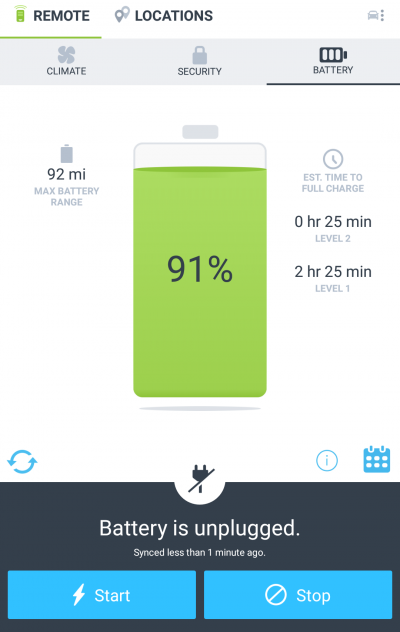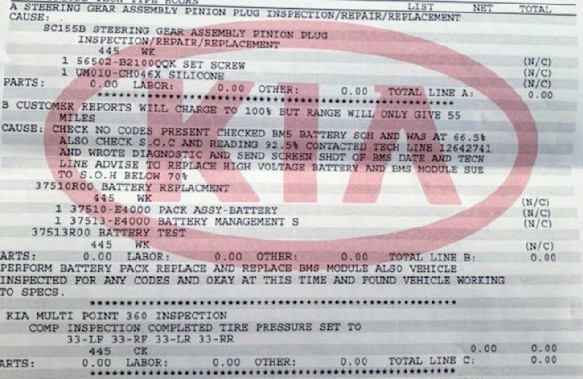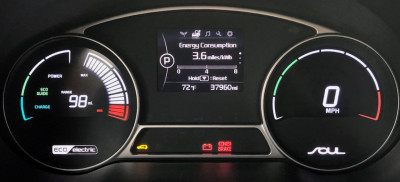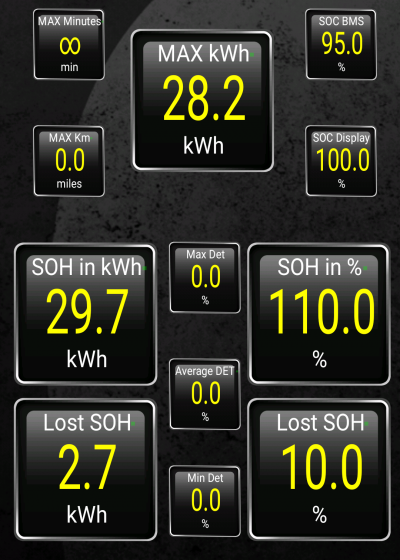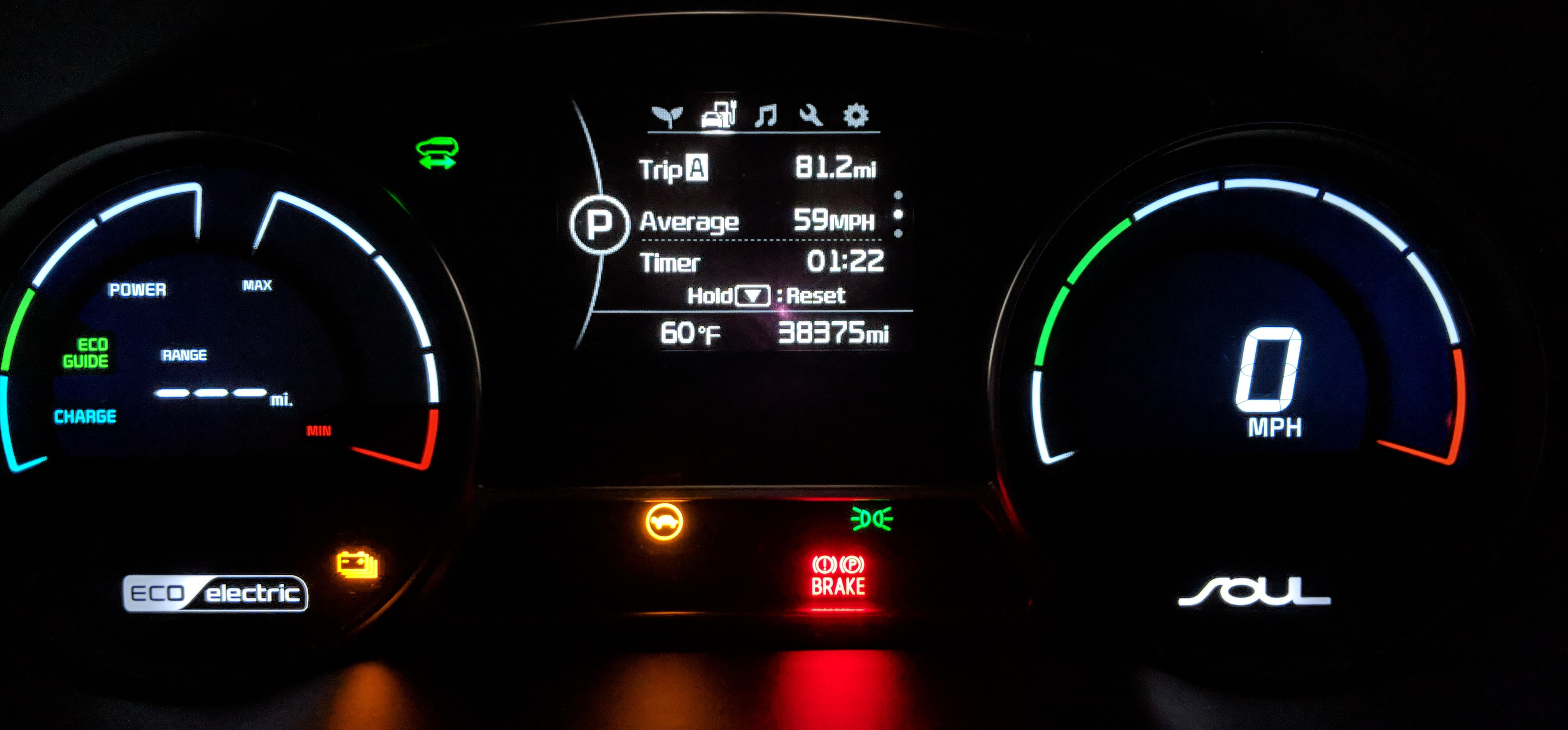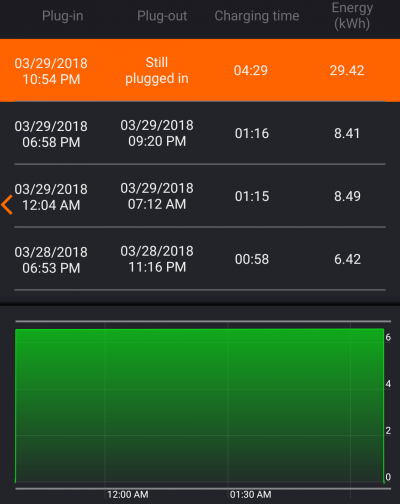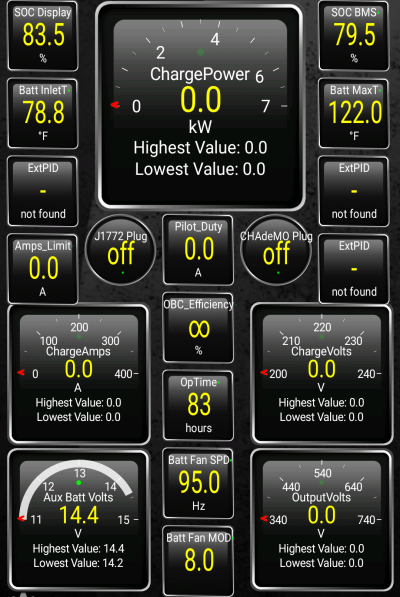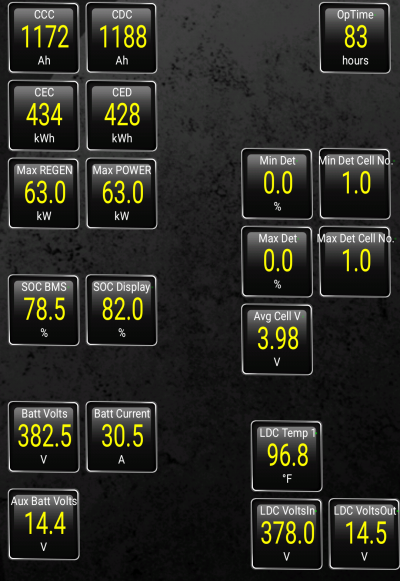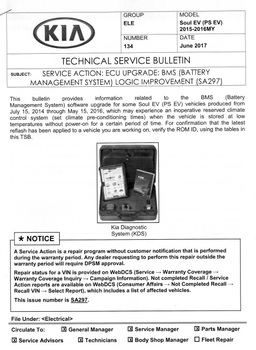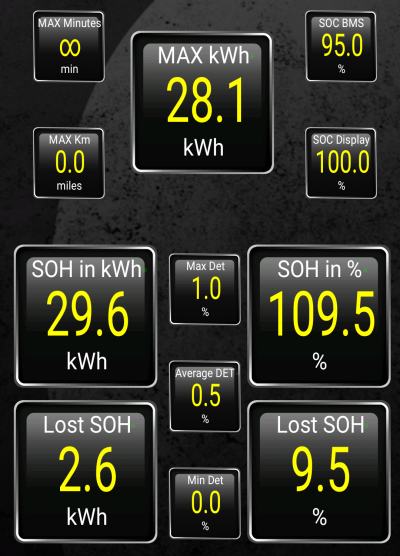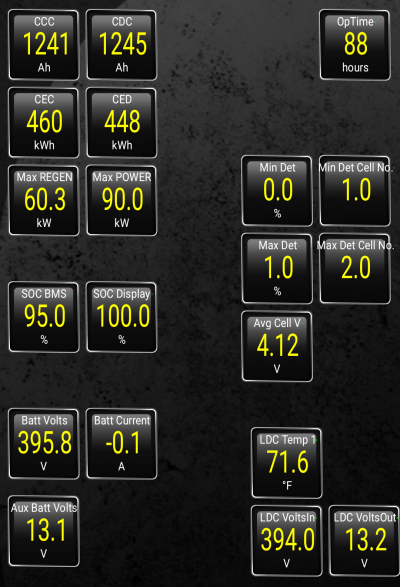I originally posted about my Soul EV in the battery aging thread, but I'm re-posting here to keep my story separate and easier to find. It's my hope that my experience will be insightful for your own situation.
I purchased a 2015 Soul EV, with roughly 37k miles in Dec 2017. I'm the second owner and I live in SoCal. The car is a 3-year lease return and the original owner lived in Northern Cali and drove the 37k miles. When I initially bought the car, the GOM read around 70 miles, but as I drove it more, it dropped 70-> 65->60->55->50 miles. There seemed to be some serious battery degredation. I decided to do a range test to see how far I can drive on a full charge (and how much kwh can be pulled out). Here are my results.
Here are Torque readings from before the range test:
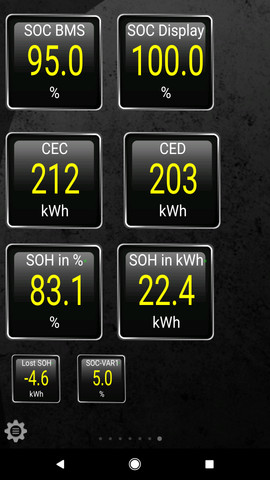
The test was done at 80mph on flat highway with no wind, cruise control on. Low battery warning came on at ~45mi (when range went to ---). Ultimately I was able to drive ~51 miles until I hit 1% (last few miles @ city speeds). Consumption was around 2.5mi/kwh on the dash.
Here are Torque readings from after the test:
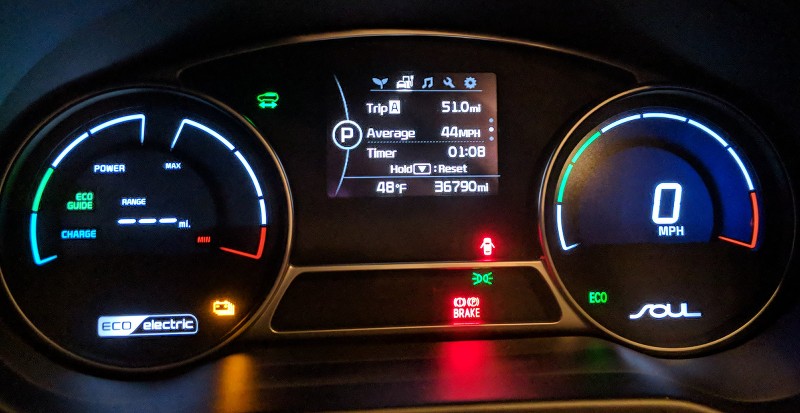
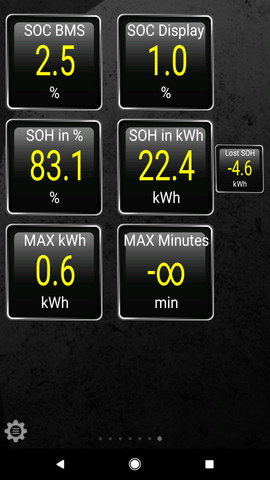
Torque reading from full charge to 100% the next day:
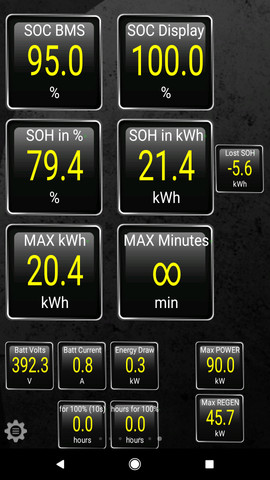
Since neither the car nor Torque provides the kWh used, the only guess is by looking at what it takes to recharge to full 100% from the EVSE. It is a very constant 6.6-6.8 kW charging speed, until the last 20-30 mins, then it tapers off. Note that EVSE kWh reading is from the wall. Please only look at the 1st row (other rows is from charging a dffferent EV):
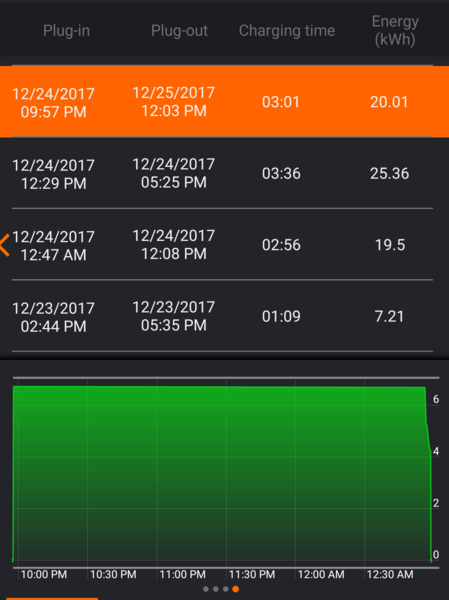
Based on the kWh used to charge, (and assuming 100% charging efficiency, which it's not), 20.4 / 27 kwh usable means 75.5% SOH. (20.4 kwh * 2.5mi/kwh = 50mi on GOM seems roughly correct). I also want to note that based on several forum members here, my SOH displayed on Torque didn't drop from 83.1% -> 79.4% from driving fast or deep-cycling to 1%. The BMS simply re-calibrated itself to the proper SOH values after been driven down to low SOC and charging back up too 100%. No harm was done to the battery by doing this test. See the calibration thread for more details on this.
Based on these SOH values, several forum members here recommend that I take in the Soul EV to the dealer to get a SOH report. This will help us validate the Torque SOH numbers, and I will potentially get a battery replacement from Kia if my SOH is registered to be less than 70% on their end based on their capacity warranty.
I purchased a 2015 Soul EV, with roughly 37k miles in Dec 2017. I'm the second owner and I live in SoCal. The car is a 3-year lease return and the original owner lived in Northern Cali and drove the 37k miles. When I initially bought the car, the GOM read around 70 miles, but as I drove it more, it dropped 70-> 65->60->55->50 miles. There seemed to be some serious battery degredation. I decided to do a range test to see how far I can drive on a full charge (and how much kwh can be pulled out). Here are my results.
Here are Torque readings from before the range test:

The test was done at 80mph on flat highway with no wind, cruise control on. Low battery warning came on at ~45mi (when range went to ---). Ultimately I was able to drive ~51 miles until I hit 1% (last few miles @ city speeds). Consumption was around 2.5mi/kwh on the dash.
Here are Torque readings from after the test:


Torque reading from full charge to 100% the next day:

Since neither the car nor Torque provides the kWh used, the only guess is by looking at what it takes to recharge to full 100% from the EVSE. It is a very constant 6.6-6.8 kW charging speed, until the last 20-30 mins, then it tapers off. Note that EVSE kWh reading is from the wall. Please only look at the 1st row (other rows is from charging a dffferent EV):

Based on the kWh used to charge, (and assuming 100% charging efficiency, which it's not), 20.4 / 27 kwh usable means 75.5% SOH. (20.4 kwh * 2.5mi/kwh = 50mi on GOM seems roughly correct). I also want to note that based on several forum members here, my SOH displayed on Torque didn't drop from 83.1% -> 79.4% from driving fast or deep-cycling to 1%. The BMS simply re-calibrated itself to the proper SOH values after been driven down to low SOC and charging back up too 100%. No harm was done to the battery by doing this test. See the calibration thread for more details on this.
Based on these SOH values, several forum members here recommend that I take in the Soul EV to the dealer to get a SOH report. This will help us validate the Torque SOH numbers, and I will potentially get a battery replacement from Kia if my SOH is registered to be less than 70% on their end based on their capacity warranty.




